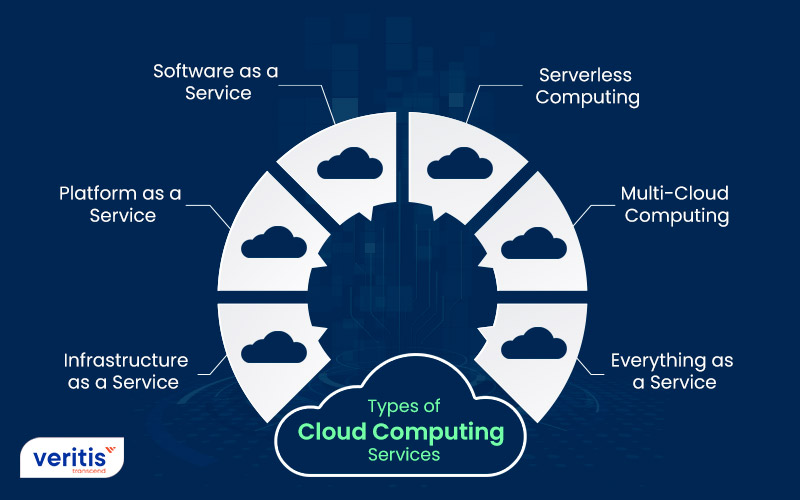Increasing Effectiveness with LinkDaddy Cloud Services for Cloud Service Administration
Experience Seamless Combination With Cloud Solutions
Discover how seamless combination with cloud services can change the method your company operates, improving and enhancing procedures efficiency. By aligning your innovation infrastructure with the appropriate cloud provider and welcoming a calculated approach to combination, you can open a globe of possibilities for your business.
Advantages of Cloud Providers Combination
Cloud services integration provides many advantages to companies seeking to improve their operations and enhance efficiency in today's digital landscape. One crucial advantage is enhanced flexibility. By incorporating different cloud solutions, companies can easily scale their resources up or down based upon demand, enabling higher dexterity in adapting to changing business requirements. This versatility likewise enables seamless cooperation among teams, despite their physical location, fostering enhanced communication and productivity.
Additionally, cloud solutions assimilation improves data security. Systematizing data storage and monitoring with integrated cloud solutions can give organizations with much better control over access permissions and data encryption, minimizing the danger of data violations or loss. In addition, automated updates and back-ups provided by cloud service suppliers assist make sure data stability and accessibility, minimizing downtime and possible interruptions to service procedures.
Picking the Right Cloud Service Provider
When picking a cloud copyright for your organization's demands, comprehensive study and analysis are crucial to guarantee optimal compatibility and efficiency. The initial action in choosing the appropriate cloud provider is to plainly define your company's requirements and objectives.

Eventually, selecting the appropriate cloud company is a calculated choice that can considerably influence your company's effectiveness and success. By conducting thorough study and due diligence, you can pick a company that seamlessly integrates with your existing framework and supports your lasting company objectives.
Applying Cloud Solutions Efficiently
The successful application of cloud remedies requires careful planning and smooth implementation to maximize effectiveness and achieve preferred outcomes. To start, it is necessary to carry out an extensive evaluation of your organization's requirements and objectives. Comprehending the particular needs will certainly aid in choosing one of the most ideal cloud services and making a tailored execution method.
As soon as the cloud solutions are chosen, cautious focus has to be paid to data movement. This process includes moving existing information to the cloud while making sure very little disturbance to operations. Data safety and basics security steps need to also be applied to safeguard delicate information throughout the migration process and beyond.
Moreover, reliable communication with stakeholders is critical for effective implementation. Prompt and clear updates on the development of the cloud assimilation project can assist manage assumptions and deal with any type of worries that might arise.
Routine performance tracking and analysis are essential post-implementation. This allows for modifications to be made immediately, making sure that the cloud solutions remain to meet the company's developing demands successfully.
Conquering Assimilation Obstacles
Attending to the intricacies of integrating different systems and technologies presents a considerable challenge for companies transitioning to cloud solutions. One of the main hurdles is the difference between legacy systems and modern-day cloud remedies. Legacy systems often lack the required APIs and compatibility to perfectly get in touch with cloud services, calling for substantial adjustments or workarounds. In addition, different cloud solution companies may use proprietary protocols and data layouts, further complicating combination initiatives.
Data safety and conformity needs include another layer of complexity. Making certain that delicate info remains shielded throughout the integration process is essential however can be difficult, especially when information requires to move in between on-premises systems and the cloud. Furthermore, companies must browse possible downtime and interruptions throughout the transition, influencing efficiency and service levels.
To get rid of these assimilation obstacles, organizations ought to prioritize extensive planning, purchase robust integration devices, and consider seeking specialist support. By very carefully dealing with these challenges, businesses can smooth their transition to cloud solutions and unlock the complete capacity of their IT infrastructure.
Maximizing ROI With Cloud Solutions
To properly maximize cloud services and boost return on investment, companies have to tactically straighten their IT sources with service objectives - Cloud Services. Optimizing ROI with cloud services entails even more than just cost financial savings; it incorporates leveraging the scalability, adaptability, and development that the cloud uses to drive service development. By embracing a cloud-first approach and maximizing source utilization, companies can realize substantial financial benefits
One key facet of making best use of ROI with cloud solutions is reliable source monitoring. This consists of rightsizing facilities, automating work monitoring, and enhancing cloud costs. By carefully monitoring usage patterns and efficiency metrics, organizations can identify opportunities to improve procedures and lessen unnecessary costs.
Moreover, implementing cloud-native technologies and techniques can enhance efficiency and more tips here performance, leading to improved ROI. Embracing DevOps principles, containerization, and serverless computer can increase growth cycles, improve scalability, and minimize time-to-market, inevitably driving check over here earnings development and price financial savings.
Final Thought
To conclude, the smooth combination of cloud solutions offers numerous advantages such as raised adaptability, cooperation, information safety, automatic updates, and cost-effectiveness. By choosing the suitable cloud copyright, successfully implementing cloud remedies, getting over assimilation challenges, and optimizing ROI through effective management, companies can completely leverage the potential of cloud solutions to enhance their organization operations.
Discover exactly how smooth assimilation with cloud solutions can revolutionize the way your organization operates, improving and streamlining processes performance.Cloud services assimilation provides many benefits to companies seeking to simplify their procedures and improve effectiveness in today's digital landscape (linkdaddy cloud services). By settling several solutions into a linked cloud atmosphere, organizations can minimize infrastructure costs, get rid of the need for preserving numerous systems, and benefit from economic climates of scale supplied by cloud suppliers. In addition, various cloud service carriers might use proprietary procedures and data layouts, further making complex integration initiatives
Making the most of ROI with cloud services involves even more than just cost financial savings; it encompasses leveraging the scalability, versatility, and technology that the cloud offers to drive service growth.